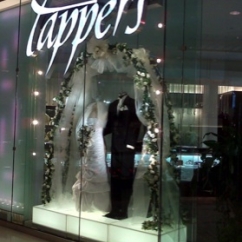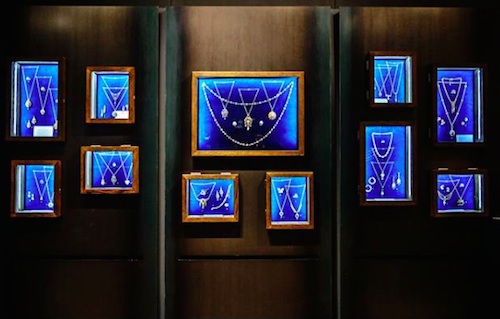Articles and News
How To Keep Your Store Relevant To New Luxury Shoppers | April 22, 2015 (0 comments)

New York, NY—What kind of jewelry goes with yoga pants and a tattoo?
If you’re catering to Millennials, that’s what they’ll want to know, because they have their own unique fashion sensibility that’s vastly different from their Boomer or Gen-X parents. Luxury these days has a brand-new style, says Pam Danziger, president of Unity Marketing, a market research firm specializing in luxury consumers. Indeed, many Millennial consumers say “luxury” is just a marketer’s label, with little relevance to their own lives. They view it as a snobbish excuse to charge more money.
“Simply calling something ‘luxury’ isn’t good enough,” she told the audience at the recent Gold: Trends, Techniques, and Transparency conference sponsored by Initiatives in Art & Culture. “Luxury has a brand new style. New [luxury] customers have new values, and new ways of shopping demand new ways of retailing. The traditional store doesn’t work in the current environment,” she said.
Perception is reality, she said. “If you can change your customer’s perception, you can change your business reality.”
To illustrate, she outlined an experiment conducted at Cornell University. Two groups were invited to dine on the exact same food, but the presentation was vastly different. One group was served cafeteria style, with harsh lighting, plastic trays, and bare tables. The other group was served their meal in a fine-dining atmosphere, with soft lighting, fine china, attractive table settings, and so forth. Both groups were asked to rank the quality of the food on a scale of one to 10. The cafeteria group gave it a 3.4 out of 10; the fine-dining group gave it 8 out of 10.

Pam Danziger
A successful luxury retailer understands why people buy. The four main reasons are: need, product features, affordability, and emotion.
It’s this last reason that’s most important, said Danziger. “Jewelers are in the people business first, and the product business second,” she told the audience. When one discusses luxury, the question of price always is part of the discussion. “There are two elements to affordability. One is absolute: can your budget or bank account meet the price? The other is relative: is it worth it to me?”

Why do people buy jewelry? Here are the reasons, says Pam Danziger.
Emotions magnify each of the other factors to drive purchases. Emotions transform need into desire, says Danziger. A product that touches emotional hot buttons will spark a purchase, and finding something wonderful for less makes the consumer feel like they won the lottery.
Research conducted by Donovan and Rossiter in their study Store Atmosphere and Purchasing Behavior showed that the emotional responses induced by a store’s environment can affect the time and money a customer spends in the store. Emotionally engaged customers mean more profitable stores, she said, because customers who are happy in a store environment spend more of both time and money there. Seven steps to make your jewelry store “pop” are:
Engage and involve customers. Good retail environments encourage customers to touch, taste, feel, and try on; to participate and interact and get involved with the product. Unfortunately for jewelry stores, the need for security can inhibit customer engagement—but it doesn’t have to. As an example, Danziger cited Doyle & Doyle, a jewelry store in New York’s hip meatpacking district that gets around the security issue by presenting jewelry as art—literally—and showcasing it in framed wall cases. Customers don’t expect to touch art in a museum and therefore aren’t put off by the fact that the jewelry is behind glass, either.

“It’s limited exposure for thieves, but maximum exposure for customers,” says Danziger. Doyle & Doyle also has the typical double-door entrance found in many jewelry stores and manufacturing facilities, but theirs was designed to be an architectural feature rather than a heavy barricade.
Evoke curiosity. The jewelry displays at Doyle & Doyle evoke curiosity, the same as art in a gallery would. “It’s uptown jewelry with a downtown vibe,” says Danziger.
Foster a contagious, electric quality. This can’t be dialed in, says Danziger. It must originate organically with the staff and spread to customers. You can buy Apple products online, but the Apple stores are always crowded because people love going to them, she said.
Convergence of atmosphere, store design, and merchandise to create a single experience.
Authenticity. At Doyle & Doyle, the owners, sisters Elizabeth and Pamela Doyle, are jewelry lovers themselves. Their story is the real thing; their jewelry is the real thing.
The right price-to-value equation. Something for everyone across a wide range of prices.
Accessibility means no pretensions and going where the customer is, whether it’s online, mobile, or on a site like Etsy as well as having a storefront.
Here’s how to translate those elements into any jewelry store, says Danziger:
- Special is as special does. Keep your focus on what makes your store special, distinctive, different, and lead with that.
- Attract customers based on that special need. For example, jewelry is symbolic and used to celebrate milestones in life, so it’s a physical expression of the collection of milestones in a customer’s life.
- Less is more. Spotlight fewer pieces to make them more special, the way Hearts On Fire does in its flagship stores, says Danziger. Let the customer know there are more pieces behind the counter, but don’t overwhelm them with too many choices on display like a Cheescake Factory menu. Help the customer figure out where to focus.
- Communicate what makes you special in new and different ways. All touchpoints—storefront, displays, advertising, social media, and your website need to communicate your specialness. For example, at the Tapper’s Diamonds & Fine Jewelry store in Novi, MI, they focus on jewelry as a marker of milestones by featuring bride and groom mannequins in the window to “mark the moment.” (Image at top of page).
- Be grounded in your community. Since most luxury independent jewelers are longtime fixtures of their communities, tap that spirit and reach out and make connections. For example, Hamilton Jewelers, a fixture in Princeton, NJ, for more than 100 years, also has a store in Palm Beach, FL, where many area residents vacation, and they also created the Liberty Medal, an annual award bestowed by the National Constitution Center in Philadelphia (about 50 miles away from Princeton). That, says Danziger, expanded Hamilton’s community to the entire country.
- Master the art of storytelling. Your store has a story to tell and you have to be able to tell it well—how your products are crafted, where they come from, what they mean, what you mean.
Danziger closed by reminding the audience not to put the label “luxury” on their stores but rather to let the experience speak for itself. “It’s not the food. It’s the setting in which it’s served,” she reminded.







